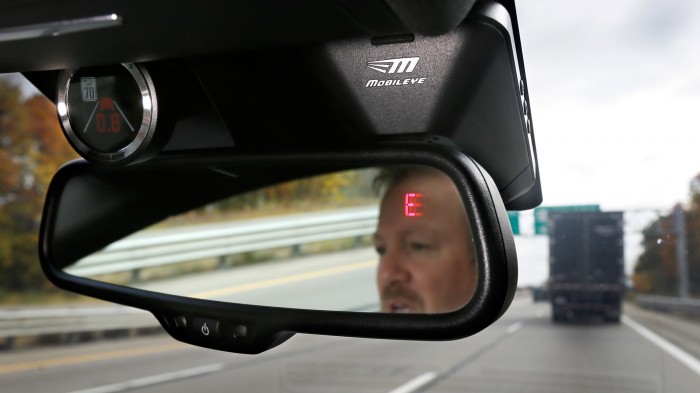Tesla Is Losing the Supplier of Autopilot’s Brain
The Israeli company Mobileye, which supplies the processing power behind Tesla’s Autopilot autonomous driving aid, has announced that it is going to stop working with the the automaker.
Mobileye, one of our 50 Smartest Companies of 2016, currently supplies Tesla with a version of its EyeQ system-on-a-chip, a piece of hardware used by several automakers for “real-time visual recognition and scene interpretation for use in intelligent vehicle systems.” But the hardware manufacturer will no longer provide those chips or algorithms to Tesla when its current contract expires, the Wall Street Journal reports.
Elon Musk said that the announcement will “not have any material effect” on Tesla’s plans. It’s not yet clear what Tesla will use as an alternative to the EyeQ system in the future, but the car manufacturer has been acquiring chip experts in recent months—notably a team of engineers and executives from AMD, as well as Jim Keller, who helped develop Apple’s A4 and A5 chips for use in iPhones and iPods.

It’s unclear which company made the decision to part ways. Elon Musk has explained that “Mobileye’s ability to evolve its technology is unfortunately negatively affected by having to support hundreds of models from legacy auto companies, resulting in a very high engineering drag coefficient.” But Mobileye also appears to be concerned about its relationship with Tesla and Autopilot, having explained in a conference call yesterday that it “seeks closer collaborations ... as opposed to just supply agreements in order to protect reputation.”
The company is likely alluding to a recent fatal Tesla crash in Florida. On that occasion, the system failed to distinguish the white side of a truck pulling out in front of the car from the sky behind it.
Tesla has strenuously defended its position ever since that event. Mobileye, however, pointed out that the “incident involved a laterally crossing vehicle, which current-generation ... systems are not designed to actuate upon.”
A preliminary report by the National Transportation Safety Board now suggests that the Tesla Model S involved in that accident was traveling at 74 miles per hour in a 65-mile-per-hour zone when it hit the truck, and that the vehicle was definitely being controlled using Autopilot. No further conclusions have yet been drawn from those findings.
Mobileye has explained that another iteration of its EyeQ system, due in 2018, will be able to identify vehicles that cross the lane in front of a car, but Tesla won’t be making use of that. Mobileye will, however, be keeping itself busy: in keeping with its conference call claims, it recently joined a partnership with BMW and Intel, which plan to develop a fully autonomous vehicle by 2021.
(Read more: Wall Street Journal, Bloomberg, “Fatal Tesla Autopilot Crash Is a Reminder Autonomous Cars Will Sometimes Screw Up,” “Tesla’s Dubious Claims About Autopilot’s Safety Record”)
Keep Reading
Most Popular
Large language models can do jaw-dropping things. But nobody knows exactly why.
And that's a problem. Figuring it out is one of the biggest scientific puzzles of our time and a crucial step towards controlling more powerful future models.
The problem with plug-in hybrids? Their drivers.
Plug-in hybrids are often sold as a transition to EVs, but new data from Europe shows we’re still underestimating the emissions they produce.
Google DeepMind’s new generative model makes Super Mario–like games from scratch
Genie learns how to control games by watching hours and hours of video. It could help train next-gen robots too.
How scientists traced a mysterious covid case back to six toilets
When wastewater surveillance turns into a hunt for a single infected individual, the ethics get tricky.
Stay connected
Get the latest updates from
MIT Technology Review
Discover special offers, top stories, upcoming events, and more.